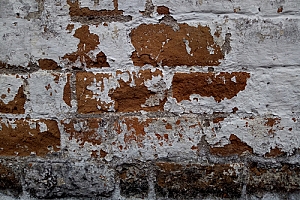Masonry Charleston SC repair is a vital component of maintaining the integrity and longevity of your building. It can help you avoid costly repairs and problems in the future.

Masonry repair includes patching cracks in mortar and plugging gaps that appear over time. It also involves replacing bricks and stones that are no longer structurally sound.
Spalling, also known as “brick cracking,” is a common problem that occurs in some types of masonry construction. It usually starts out as a minor issue but can become more serious as time passes. Fortunately, the underlying problem is fairly simple to fix.
Spalled bricks are caused by corrosion of a shelf angle, which is a metal piece that’s installed behind a row of bricks. It’s designed to distribute the weight of a wall so that no one part of the building bears all of the bricks. When a shelf angle begins to corrode, it won’t be able to do its job properly, and the bricks will begin chipping away.
When this happens, it can affect the stability of your home’s foundation and lead to serious structural damage if the problem goes untreated. That’s why it’s important to take action as soon as you notice that your bricks are starting to chip.
This can happen for a variety of reasons, but the main one is that your shelf angle isn’t doing its job. It’s causing the bricks to shift, which means they won’t be balancing the weight of the wall correctly and can cause them to break.
Another reason for this is that your shelf angle is corroding, which can lead to problems with the rest of your masonry work. If this happens, you’ll need to have a mason fix the problem in order to ensure that your walls and foundation aren’t going to be damaged further.
The best way to prevent this is by installing a shelf angle on each floor of your house or structure. It’s especially important to do so if you have a steel stud or brick veneer exterior wall system since these materials can melt in the event of a fire.
Mortar is a mixture of chemicals and sand spread over bricks to keep them in place. It’s a tough material, but it can deteriorate through age and exposure. Over time, cracks in the mortar can lead to other problems like water damage and structural failure.
The mortar should be mixed to be slightly softer or less compressive than the surrounding stone or brick, allowing it to act as a sacrificial cushion. This means it can absorb stress and pressure caused by temperature changes, moisture, differential settlement, and the movement of building materials.
It is also necessary to match the strength of the mix to the type and condition of the masonry, its degree of exposure (for example, chimneys and parapets), and any other historical features of the building. The final mix will need to be adapted to suit any new performance requirements, such as the requirement for lime mortars to be compatible with the existing masonry.
When the new mortar has been prepared, it should be compacted into the joint with a pointing iron to ensure that there is a firm bond between the new mortar and the existing stonework. Once firmly packed, the new mortar should be left to sit and set for about a week to give it time to fully cure.
During this period, it should be covered with ventilated covers (hessian, thick blankets, or carpet underlay) to maintain the dampness required for it to set and to avoid any damage to the masonry. Alternatively, regular mist spraying can be used to help the mortar set more rapidly.
After the new mortar has been set and cured, it should be re-finished with a smooth, even finish that will allow the natural aging process to take hold. This may be a ‘flush’ finish for untreated joints or a ‘brick chamfer’ for joints treated with a ‘brick reseal.’
Repairing a damaged or cracked brick or masonry joint is often easier than you might think. There are many tools and techniques available to fix crumbling or damaged masonry joints on your own or with the help of a professional masonry specialist, engineer, or certified home inspector.